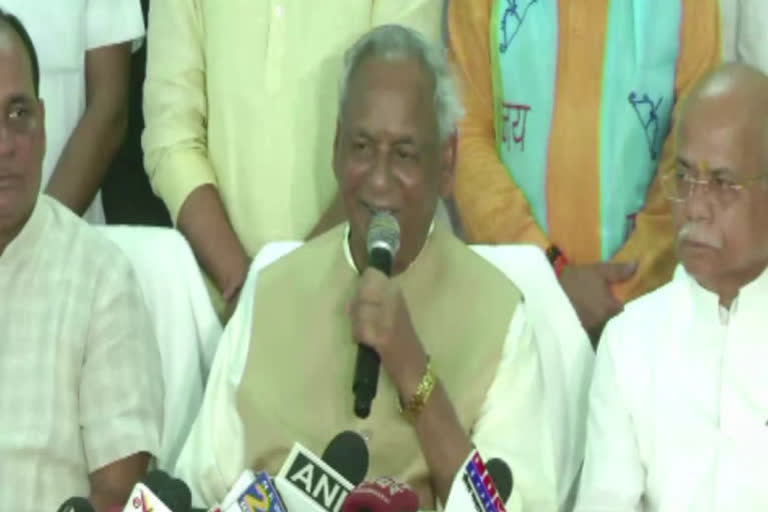Hyderabad: From a grassroot RSS worker to occupying the highest echelons of the country's largest state, Kalyan Singh's life is a tale of struggle, grit, perseverance and determination.
Born into an agricultural family on January 5, 1932, at Aligarh in Uttar Pradesh, Singh's younger days were laden with struggle. He, who was ingrained with the philosophy of Hindutva since childhood, got enrolled with the RSS post his education. He forayed into politics and identified himself with the Jan Sangh, the Janata Party and later the BJP -- a party that judged his potential and made him the chief minister later on. As the chief of Uttar Pradesh, Singh was recognised as a tough taskmaster and a vociferous advocate of Ram Mandir.
Singh's tryst with mainstream politics began at the age of 30 when Jan Sangh fielded him as an MLA candidate from Atrauli constituency in Aligarh. Though he tasted defeat, he continued to stay afloat in politics and registered his first victory in 1967 against the Congress. For the next 13 years, he remained undefeated, only to lose to Congress candidate Anwar Khan in the 1980 Assembly polls. However, Singh came back with a bang in 1985 and remained the undisputed leader of Atrauli for the next 19 years until 2004.
When the Babri Masjid tension gripped the country, Singh turned into a hardcore Hindutva proponent. His charisma fetched the BJP rich dividends as the party raked in 221 seats in the 1991 Assembly polls. Fully convinced of his calibre, the BJP crowned him the Chief Minister. However, with the demolition of the Babri Masjid the next year, Singh assumed moral responsibility and offered to resign hours after the incident.
READ: Former UP CM Kalyan Singh passes away at 89
In 1993, the people of Atrauli and Kasganj constituencies elected him as their legislator. Though the BJP's vote share was the highest among the parties, Mulayam Singh Yadav's Samajwadi Party and the Bahujan Samaj Party (BSP) stitched an alliance to form the government and kept Singh and the BJP out of power. Singh, however, became the Leader of the Opposition. This coalition government was dissolved four years later, thanks to the infamous 'Guest House' incident.
With a year remaining for the next Assembly polls, the BJP forged an alliance with the BSP to form a government. As per the arrangements, BSP's Mayawati was sworn in as the Chief Minister for the first six months. However, when it was Singh's turn to occupy the big throne, the BSP withdrew support, leading to the collapse of the government. Singh then took Naresh Agarwal, an erstwhile Congress MLA into confidence. The latter quit the grand old party and quickly formed his own Lokatantrik Congress Party and brought along as many as 21 MLAs. Buoyed by his support, Singh rewarded Agarwal with the electricity portfolio in the government.
Towards the end of the 1990s, Singh had become a popular figure in national politics. However, his rift with BJP stalwart Atal Bihari Vajpayee forced his exit from the party in 1999. Five years later, he rejoined the saffron party and was fielded as the MP candidate from Bulandshahr. In 2009, he again quit the BJP due to internal feud, and contested and won the Lok Sabha election the same year from Uttar Pradesh's Etah as an independent candidate. Later, he formed his own party, the Jan Kranti Party (Rashtrawadi).
READ: Former UP CM Kalyan Singh's health condition remains critical: Hospital
As the 2014 Lok Sabha polls neared, Singh merged his JKP(R) with the BJP after the then BJP president Nitin Gadkari's persistent efforts. The saffron party rewarded him with the post of the Governor of Rajasthan on 26 August that year. In January 2015, he was given an additional charge as the Governor of Himachal Pradesh.
Irrespective of his political twists and decisions, Singh will always be remembered as a tall leader, who dreamt big and made his dreams turn into reality. He will certainly go down as a legendary figure in political circles, especially that of Uttar Pradesh.



